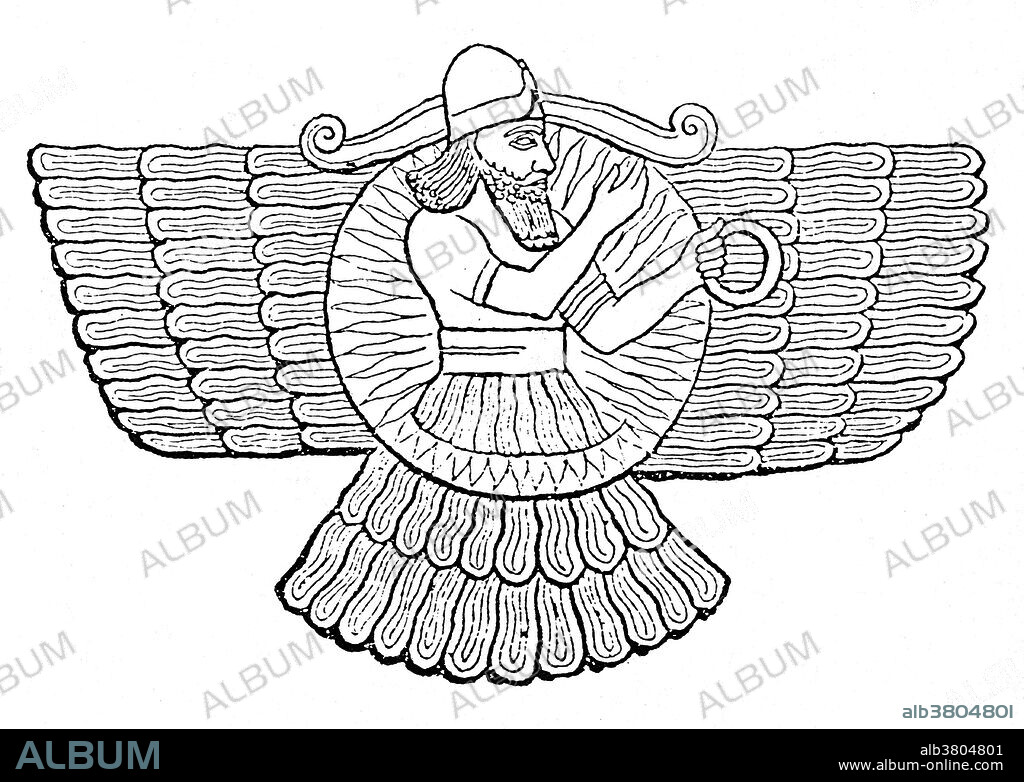alb3804801
Ashur, Assyrian God

|
Zu einem anderen Lightbox hinzufügen |
|
Zu einem anderen Lightbox hinzufügen |



Haben Sie bereits ein Konto? Anmelden
Sie haben kein Konto? Registrieren
Dieses Bild kaufen

Titel:
Ashur, Assyrian God
Untertitel:
Siehe automatische Übersetzung
Ashur is an East Semitic god, and the head of the Assyrian pantheon in Mesopotamian religion, worshipped mainly in the northern half of Mesopotamia, and parts of north east Syria and south east Asia Minor which constituted old Assyria. The symbols of Ashur include: 1) a winged disc with horns, enclosing four circles revolving round a middle circle, 2) a circle or wheel, suspended from wings, and enclosing a warrior drawing his bow to discharge an arrow, 3) the same circle with the warrior's bow carried in his left hand, while the right hand is uplifted as if to bless his worshipers. Ashur, together with a number of other Mesopotamian gods, continued to be worshipped by Assyrians long after the fall of Assyria. The city of Ashur, named in honor of the deity, was inhabited until the 14th century AD, when a massacre of Assyrian Christians by Tamerlane left it finally emptied. Ashur is still a common given and family name amongst Assyrians to this day.
Persönlichkeiten:
Bildnachweis:
Album / Science Source / New York Public Library
Freigaben (Releases):
Model: Nein - Eigentum: Nein
Rechtefragen?
Rechtefragen?
Bildgröße:
4800 x 3419 px | 47.0 MB
Druckgröße:
40.6 x 28.9 cm | 16.0 x 11.4 in (300 dpi)
Schlüsselwörter:
 Pinterest
Pinterest Twitter
Twitter Facebook
Facebook Link kopieren
Link kopieren Email
Email
